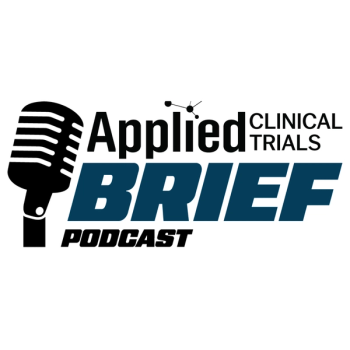
Using AI and Tokenized Data to Match Patients to Protocols
Understand how combining proprietary and real-world datasets with tokenization enables accurate protocol matching while maintaining privacy and compliance.
In a recent video interview with Applied Clinical Trials, Matt Holms, vice president of sales at Citeline, discussed the persistent barriers slowing patient recruitment and how technology and data-driven strategies can help modernize clinical trial operations. He outlined factors such as site performance variability, investigator scarcity, and protocol complexity as key contributors to trial delays, emphasizing the need for more realistic protocol design informed by real-world data. Holms explained how AI and tokenization can strengthen patient–protocol matching, streamline feasibility, and support responsible data use. He also highlighted the importance of therapeutic area–specific recruitment approaches, sponsor-led site selection oversight, and engagement with non-research healthcare providers to expand patient access—calling for greater industry collaboration to create a more efficient and equitable recruitment ecosystem.
The below interview transcript was lightly edited for clarity.
ACT: Where do AI-powered tools add the most value in recruitment workflows, and how can clinical teams ensure these technologies are used responsibly and efficiently?
Holms: So AI is used so often in our space. I’ve seen a lot of sponsors and talked to a lot of sponsors who feel like they’ve been burned by companies that claim to have AI. And I think the real critical follow-up question when anybody says that they have AI is, well, what data do you have? Because if you don’t have the data, the AI really doesn’t matter.
The way we view things here at Citeline is that, yes, proprietary data, performance data, enrollment data—that’s gold-standard stuff—but any kind of proprietary data that you have, coupled with real-world data that you can then layer on AI, but also incorporate tokenization. And I think a lot of people aren’t familiar with tokenization; it’s starting to become more well known.
Just to level-set, Datavant really created this concept of tokenization. So you and I, Andy, we all have a token. If there’s a real-world data company that has your EMR, your lab, your claims data, those exist in silos. But if I take all my data and take it to Datavant, they can aggregate all of those silos underneath that patient’s token. It’s pretty amazing. So you get that collective view, and I think you really have to have all four pieces there that I just referenced for an AI solution to work.
Getting back to the question on what are really the applications of using AI in recruitment—it really comes down to, right now, matching patients with protocols. And it’s not just EMR data, because that typically will be the most comprehensive, but you may have other data sources that aren’t in the EMR. You have lab data, you have claims data. By aggregating that all together, but also coupling it with any kind of proprietary data with respect to who are the HCPs treating them, what are their NPI numbers—so you really have to have, I think, all four pieces. You have to have real-world data, you have to have proprietary data, you have to have tokenization mixed in, and then you have to have AI that can take that tokenized data and create algorithms to run the protocol matching of that patient and provider detail with that protocol’s inclusion/exclusion criteria.
At the end of the day, that’s really the biggest use case for AI in recruitment. And the piece you asked about—using it responsibly and efficiently—you have to respect the privacy. I think there is a pretty high standard in this industry with real-world data. Anybody who buys real-world data has to adhere to certain privacy restrictions; you can’t buy that data with any PHI. But there’s a lot that goes into the compliance of that. As the data becomes more plentiful, you really have to make sure that the companies using it are adhering to those compliance and regulatory requirements, because it’s not simple—it’s very comprehensive. And the bigger the data gets, the more comprehensive the managing of that is.
Newsletter
Stay current in clinical research with Applied Clinical Trials, providing expert insights, regulatory updates, and practical strategies for successful clinical trial design and execution.



